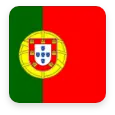Language Guides

Despite being the official language of just eight countries, Portuguese has approximately 240 million speakers worldwide. This is largely because of Brazil. This massive, diverse and beautiful South American country has a population of 209 million, accounting for 87% of Portuguese speakers. However, relatively few adults and businesses use anything other than Portuguese. So, if you want to do business in Brazil or communicate with any of the Portuguese speakers around the world, watch our language guides and consider taking our Portuguese language course. Because of the sheer size of the country and its vast population, our language guide focuses on Brazil in her videos. However, she also discusses the differences between Brazilian Portuguese and European Portuguese for learners hoping to take a course in the latter. You will still find the videos useful, but if you have questions about any Portuguese dialects or our language classes, please get in touch.
Interacting with the locals
Your guide begins her video series by painting a picture of Brazilians and their mannerisms. This is important to know when learning a language. When you talk with a Portuguese speaker for the first time, it’s helpful to know how patient they are likely to be while you attempt to speak the language. Fortunately, Brazilians are famous for their happy, friendly and generous nature. Anyone you interact with is likely to encourage you to continue. They may even slow down their own speech to help.
Regional differences
Brazil comprises five distinct regions, all of which have variations in their traditions, geography and people. For instance, the northeast region is heavily influenced by African culture. Locals here are even more family-focused and express their generosity by sharing their homes, their food and their company. The people of the south are also generous but a little more reserved as they live in more populated, industrialised cities. They are also more partial to European fashion, design, art and cuisine. Such differences don’t just impact behaviour, but language, with different regions using varying slang and accents.
Brazilian Portuguese vs. European Portuguese
However, regional language differences don’t just exist in Brazil. Portuguese has small variations across borders, too. Your guide will explain some of the most obvious differences, which are predominantly phonetic. There are also some discrepancies between Brazilian Portuguese and European Portuguese grammar and spelling. For example, ice cream is sorvete in Brazil but gelado in Portugal.
Learning advice
Finally, our expert language guide also runs down some aspects of Portuguese that tend to be difficult for learners. Knowing this before starting a course can help set expectations and prevent you from feeling demotivated later. Finally, the videos give an estimate for the number of hours of classroom study you will probably need to reach survival, intermediate and expert levels of fluency.
Enjoy these language guides and learn about Brazil and Portuguese. Once you feel inspired to start learning the language, send us an enquiry and someone will be in touch to arrange your first class.

